Sanada×Numata
Castletown in the Sky: Sanada’s Hometown, Numata
Visiting Historic and Cultural Sites Related to Sanada Clan.
Going back over 400 years ago, Sanada reigned over Numata where renowned Samurai warriors battled over. There are numbers of ruins from Sanada era all over the town.
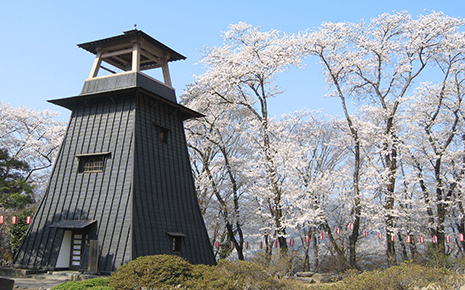
The Ruins of Numata Castle
The castle was built in 1532 by Akiyasu Mankisai Numata with the period of three years. Later, Masayuki Sanada made a triumph entry to the castle, and his heir, Nobuyuki, became a lord in 1590. The castle was a residence of Sanada clan for 91 years over five generations. The five story castle tower was also built in 1597.
The territory was confiscated by Edo government in 1681 at the time of fifth lord, Nobutoshi. It was then completely destroyed by the order of Edo government in January of the following year and never been rebuilt.
【Location:Numata Park】
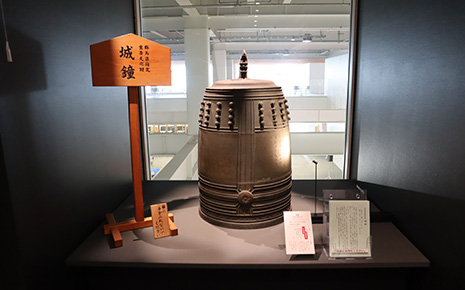
The Castle Bell
The feudal lord Nobuyoshi, second generation of Sanada clan, ordered to make a bell in 1634. It was hung at San-no-maru tower and used for a time signal. It is currently hung at the Bell Tower which was restored in 1983 and tells time. The bell at the Bell Tower is a replica as the real one is exhibited at the Numata History Museum.
【Location:Numata History Museum】
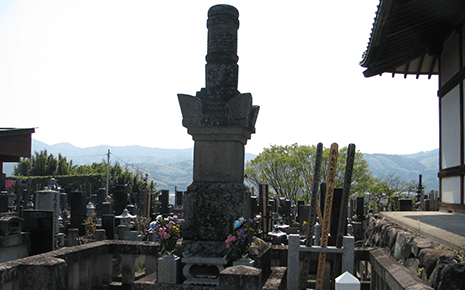
The Grave of Daireninden
This grave is of Dairenin-den who was an official wife of Nobuyuki, the first lord of Sanada clan, and also the mother of Nobumasa, fourth generation of Sanada clan.
Dairenin-den, as known as Princess Komatsu, was a daughter of Tadakatsu Honda, senior statesman for Ieyasu Tokugawa. Ieyasu adopted her in 1589 and married her off to Nobuyuki.
She was considered a courageous woman because she felt suspicious and refused to let Masayuki, her father, and Yukimura, younger brother, enter the castle when they visited on the way back to Ueda during the battle of Sekigahara in 1600.
She became sick in 1620 and died at age of 48 on February 24 in Kounosu, Musashi province on the way to Kusatsu from Edo for medical treatment.
She was buried at three temples: Shouganji Temple in Kounosu, Shougakuji Temple in Numata and Housenji Temple in Ueda.
【Location:Shougakuji Temple】

Kenpon-Chakushoku Jizo-Juo-Zu Painting
Jizo Bosatsu (guardian deities of children) is painted at the center along with five Juo (ten rulers of the afterlife) at each side. This Buddhist painting with brilliant coloring on silk was completed in 1461 by great painter. It has been said that Dairenin donated it to Shoukaji Temple.
【Location:Shougakuji Temple】
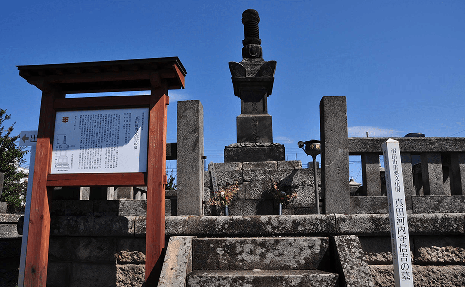
The Grave of Nobuyoshi Sanada Kawachi-no-kami
This grave is of lord Nobuyoshi, second generation of Sanada clan.
The family crest of Sanada clan called ‘Mutsurensen (six coins)’ is engraved on the cover of the grave. The grave is Hokyoin Pagoda with 297cm tall.
Masayuki became second lord of Numata after he moved to Ueda from Numata in 1616. However, he died in an Edo residence on November 28, 1634. His body was sent to Numata, cremated at Mt. Kasho and buried at this temple.
【Location:Tenkeiji Temple】
The Grave of Keijuinden
Keijuin-den was a concubine of Nobuyoshi, Sanada clan’s second lord of Numata and was a mother of fifth lord Nobutoshi. She renovated Honryuji Temple in 1667. Then, she renamed the temple to Keijuzan Myokoji Temple and founded by herself. She died on May 27, 1669.
【Location:Myokoji Temple】
The Grave of Nobutoshi Sanada
This grave is of fifth lord of Sanada clan, Nobutoshi. He was born in 1635. On June 20, 1639, he was given 5000 Goku (approx. 5 ㎢) in Tone county out of inherited territory from the third lord Kumanosuke. He became a feudal lord of Numata in October, 1656 and had conducted land surveys within the territory by crop yield system since 1662.
He changed his rank in November 1681 and was exiled to Dewa Yamagata Domain (Okuhira family). He died at Utsunomiya Domain (Okuhira family) on the New Year of 1688. It has been said that he was buried at Ryugein-Mirokuji Temple.
【Location:Mirokuji at Mt.Kasho Temple】
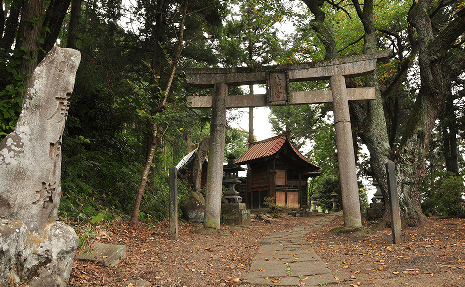
Togano Hachimangu Shrine
Togano Hachimangu Shrine was a guardian deity for the lords of Numata Castle from generation to generation. Akiyasu Numata, the lord of Numata Castle, welcomed Gokan Hachimangu Shrine in 1530 and designated it as a guardian deity of the castle.
Since Masayuki Sanada prayed upon taking off to battle in 1580, the shrine has been worshiped as a god of military arts. At the grounds of the shrine, you will see a number of stone works such as Torii gateway loaded with turtle shell shaped stone walls done by masons from Uedo village, Ina county, Shinshu.
【Location:Togano Hachimangu Shrine】
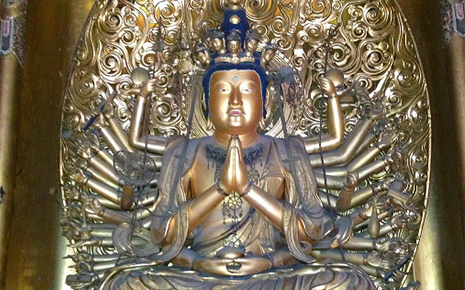
Sanada-Kannon
(Senju-Kanzeon-Bosatsu-Zazo) (seated statue of the thousand-armed goddess of mercy)
This elaborate statue is magnificent for its body, foundation and Buddhist altar lacquered with gold leaf. With Buddha’s faces on the top and dozens of arms attached to the body, skillful technique can be seen in the egg-shaped halo.
This Senju-Kannon statue is called Sanada Kannnon because Nobutoshi Sanada, fifth lord of Sanada clan, moved Jorakuin Temple from Tsukiyano to Makuiwa Castle ruin in 1663 and made it to principal deity as a protection from demon.
【Location:Kanrakuin Temple】
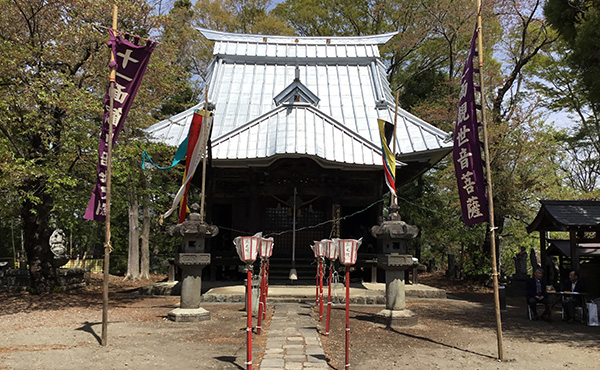
Dedication Lantern
These lanterns were dedicated by fifth lord of Sanada clan, Nobutoshi, to Sankoin Temple. August 18, 1664 is engraved on them.
According to one story, Nobutoshi offered donating an eleven faced Kannon statue to the chief priest of Sankoin Temple in 1663, but it was refused. After Nobutoshi interrupted a pilgrimage during the festival of eleven faced Kannon, he became sick from a plague epidemic in that year. Nobutoshi became very concerned, and then, he built the Kannon hall and dedicated two stone lanterns. His wife also made an offer of two wooden sculptures of a white horse.
【Location:Sankoin Temple】
